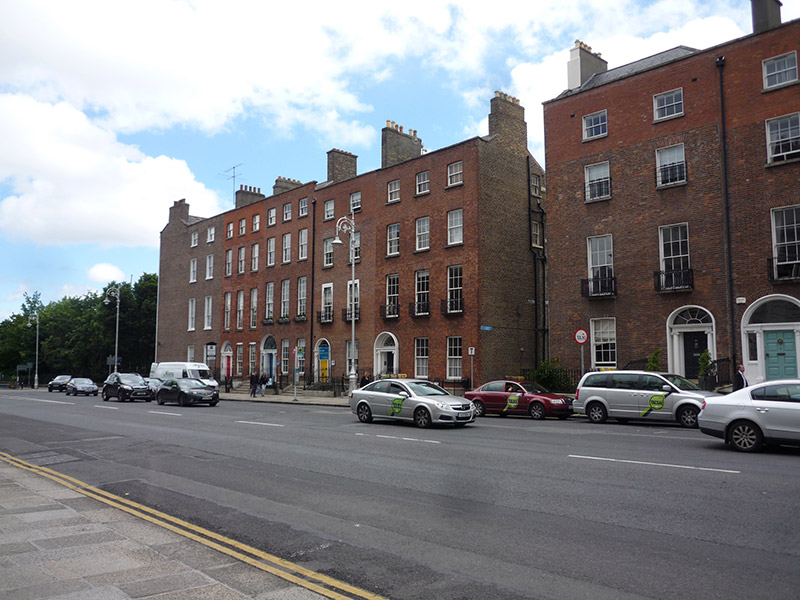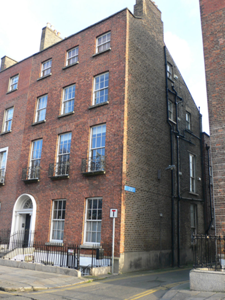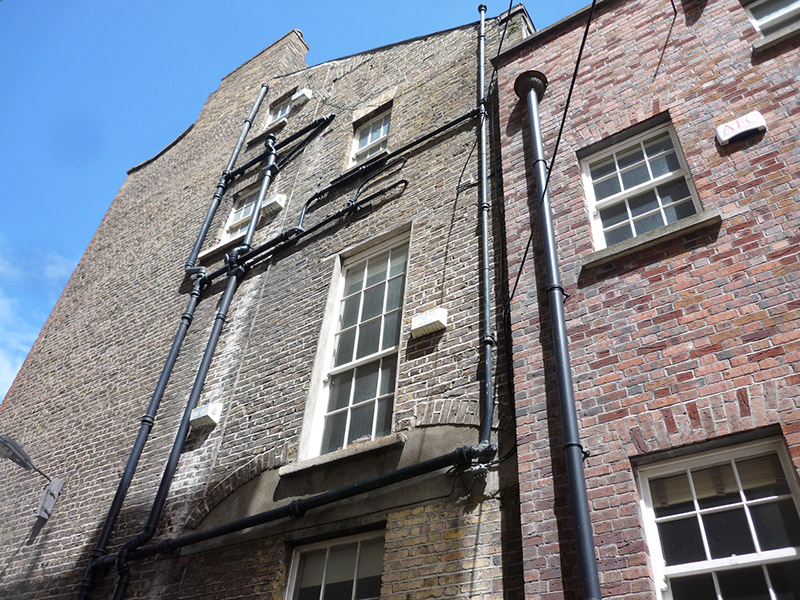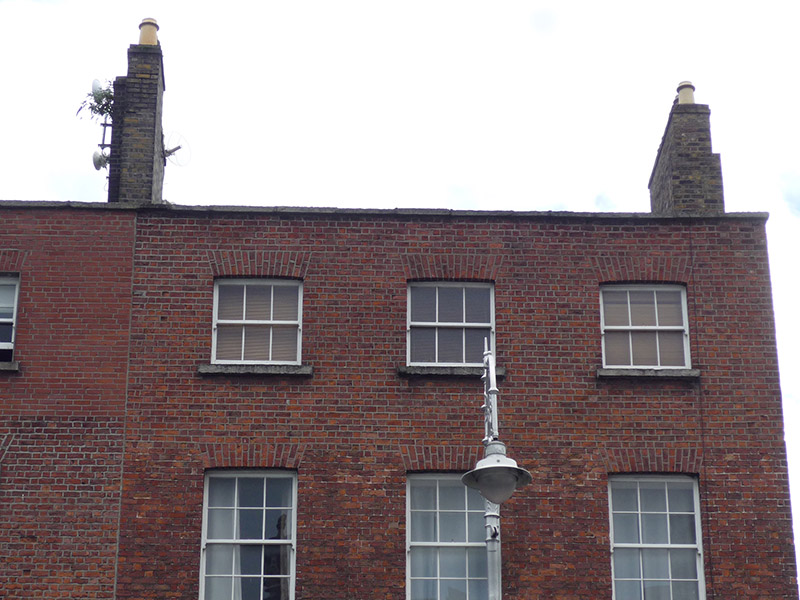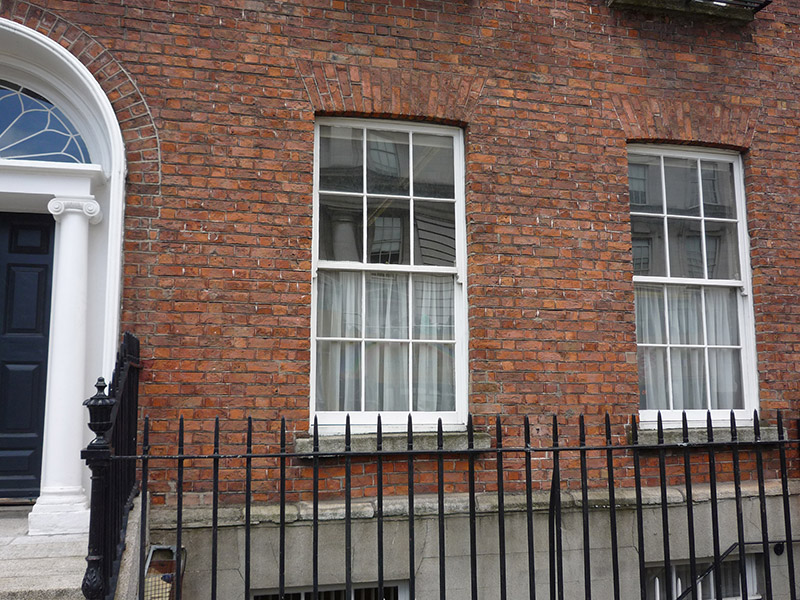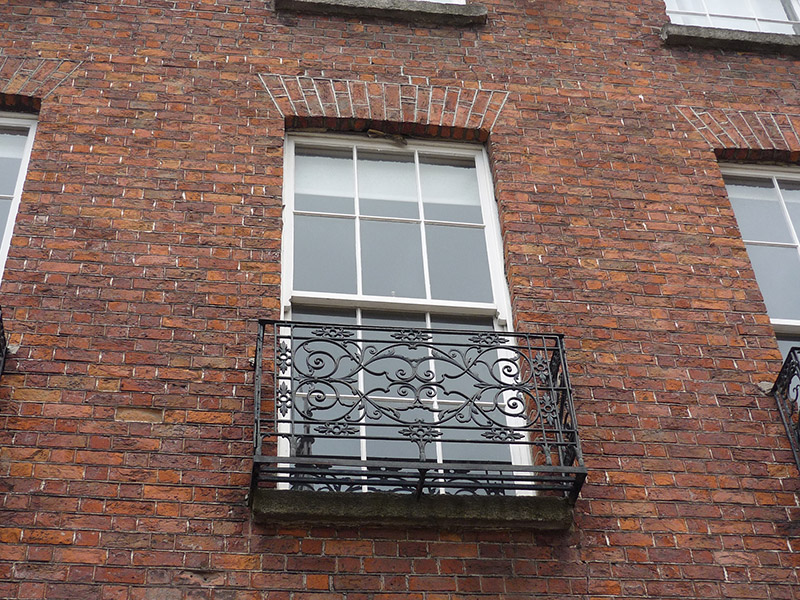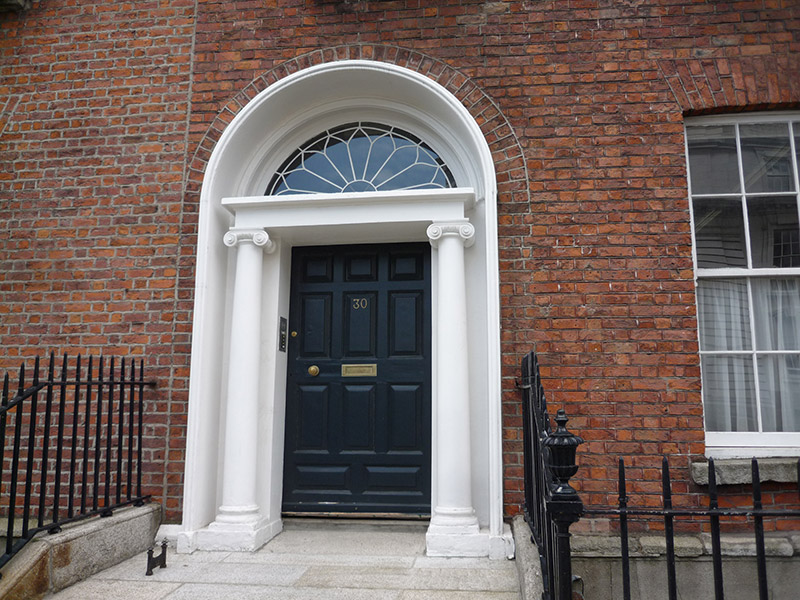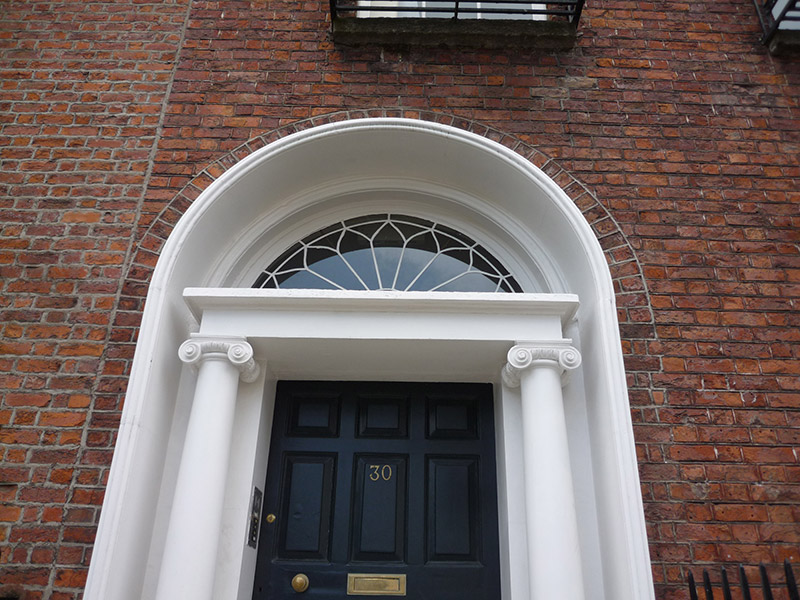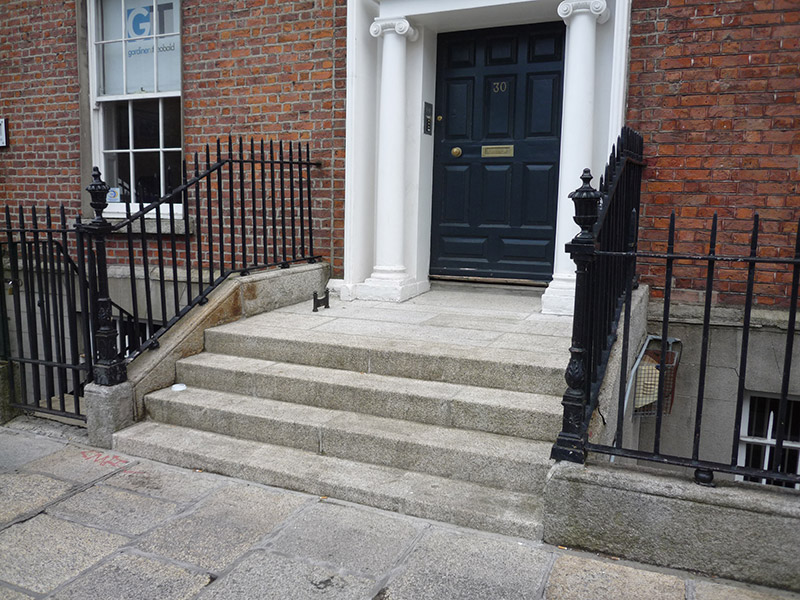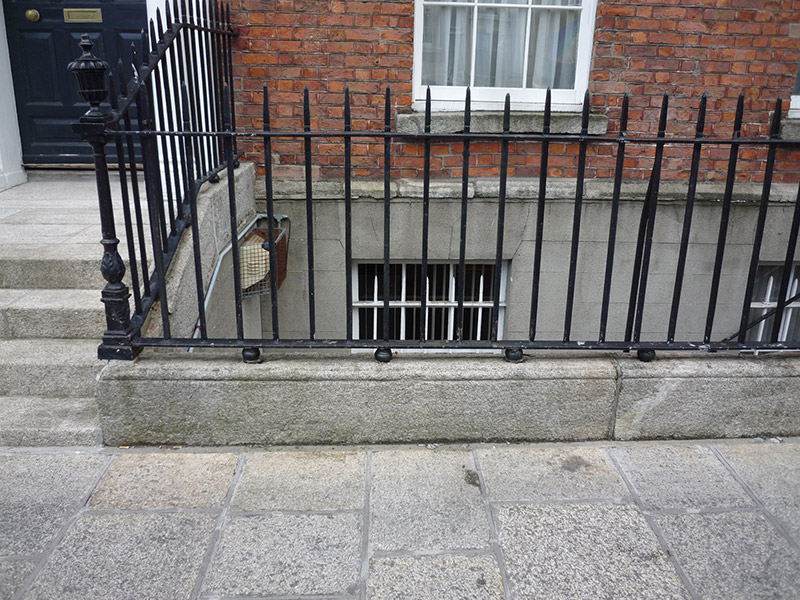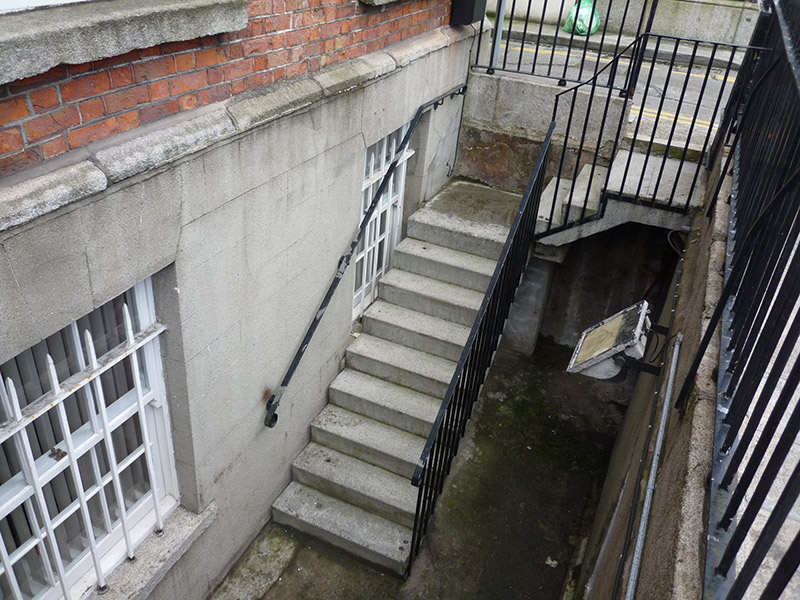Survey Data
Reg No
50100439
Rating
Regional
Categories of Special Interest
Architectural, Artistic
Original Use
House
In Use As
Office
Date
1770 - 1790
Coordinates
316473, 233511
Date Recorded
01/07/2016
Date Updated
--/--/--
Description
Corner-sited three-bay four-storey former house over basement, built c. 1780 as one in unequal pair with No. 31, having three-storey return of c. 1920 to rear. Now in commercial office use. Slate roof with cat-slide section, behind rebuilt parapet with concrete coping, and having lean-to section to north end of rear. Brown brick chimneystacks with terracotta pots to party wall, south gable and to rear; parapet gutters, cast-iron rainwater goods to south gable and hipped roof to return. Flemish bond red brick walling to front elevation on granite plinth over ruled-and-lined rendered basement walling; brown brick to south gable; rendered to rear; return having recently refaced red brick to south elevation and rendered walling to other walls. South elevation of rear has blocked-up window opening to top floor and segmental-arch opening to ground floor. Square-headed window openings, diminishing in height to upper floors, with granite sills. Timber sliding sash windows with ogee horns, three-over-three pane to top floor, six-over-six pane elsewhere; south elevation having similar top and second floors, and nine-over-six pane to lower floors. Wrought-iron grilles to basement and decorative cast-iron balconettes to first floor. Round-headed doorcase having moulded rendered reveals, pro-style Ionic columns, plain entablature, decorative replacement fanlight and eleven-panel timber door with plain brass furniture. Granite platform bridging basement, with cast-iron boot-scrape and four steps to street. Basement area enclosed by wrought-iron railings with decorative cast-iron posts on moulded granite plinth, wrought-iron gate and concrete steps to basement, and replacement timber panelled door beneath entrance platform.
Appraisal
A late eighteenth-century Georgian house that is relatively well retained and characterized by balanced proportions and a graded fenestration pattern typical of the period. The austere façade is enriched with a good decorative doorcase, setting features and cast-iron balconettes. Construction of Merrion Street began in the early 1750s, following the completion of Kildare (now Leinster) House. In 1762, when Merrion Square was laid out, the middle portion of Merrion Street became the west side of the square. No. 30 makes an important contribution to the early streetscape character and architectural quality of the south city Georgian core, this side of Merrion Street Upper having an intact appearance.
